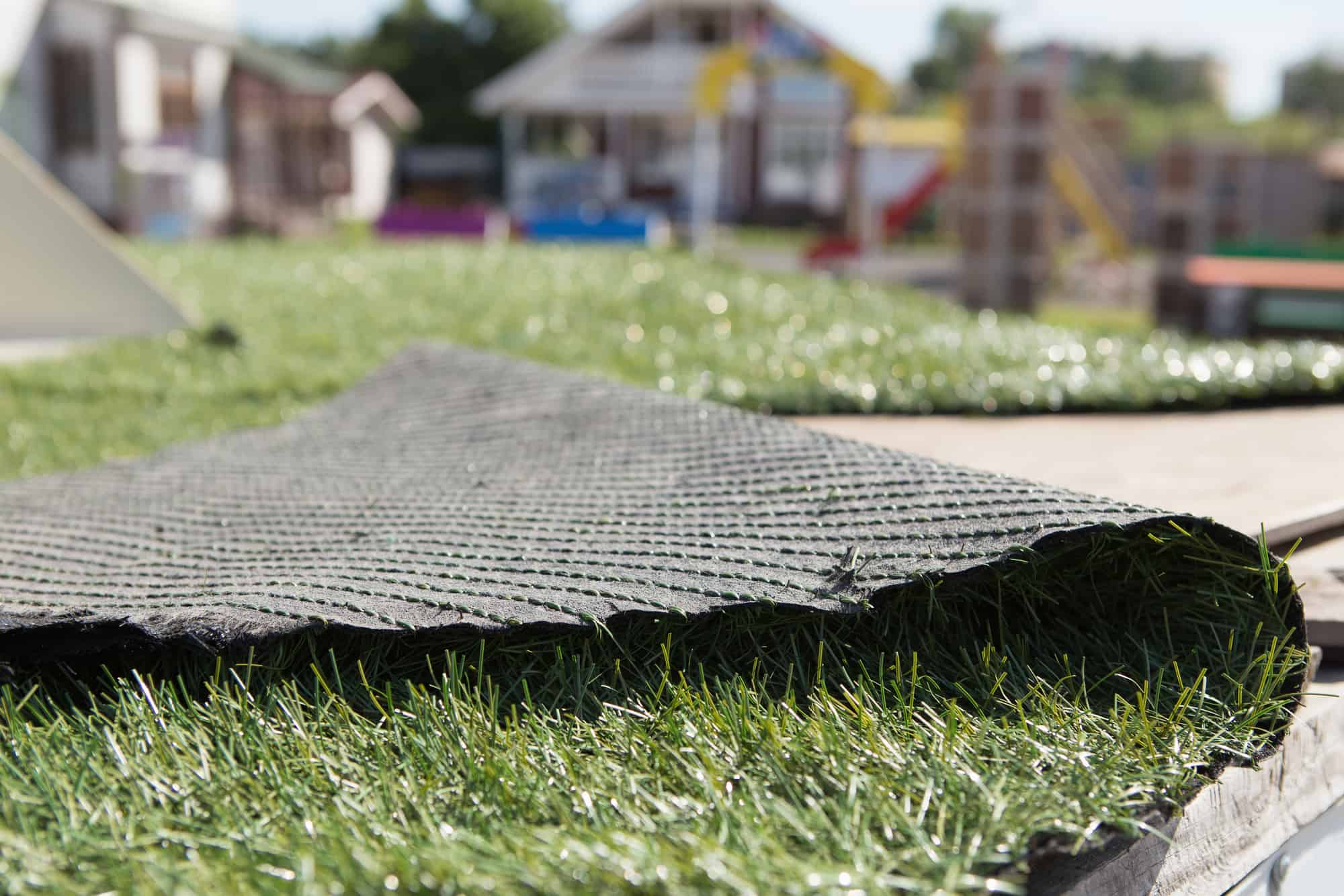If you are the proud new owner of an artificial lawn, you are hopefully enjoying your low-maintenance yard.
But you may also have some questions about what you can and can’t do with your artificial lawn, and one of those questions may be whether you can put a shed on your artificial grass. The answer is yes, you can.
Keep reading to learn more about the best ways to put a shed on artificial turf…
How to Care for Artificial Grass
Your artificial grass is actually pretty sturdy, and that’s one of the things we love about it.
For the most part, you can use your yard as you usually would without worrying about your grass.
Feel free to walk on it, play on it, or put furniture and toys on it.
However, two of the things you should be careful of with artificial grass are sharp and heavy objects.
If sharp objects damage your grass, it obviously won’t grow back the way natural grass will.
If your artificial grass is smashed down by something heavy – this takes both time and weight – it doesn’t happen immediately, it may not bounce back.
What does this mean if you want to put a shed on your artificial grass?
First of all, you need to be careful when building the shed and storing things in it.
In either instance, you don’t want your lovely artificial lawn to be damaged by tools or other items.
Be aware that chemicals such as paint, pesticides, and gasoline can also harm your artificial grass, so if you are painting your shed or storing chemicals in the shed, you should be careful here too.
It also means that you may want to erect your shed on blocks or another base.
Sheds are usually permanent or semi-permanent installations, which means that the weight of the shed will crush your grass over time.
Different Ways to Put a Shed on Artificial Turf
If you don’t want all the grass under your shed to get mashed down, you can put the shed up on concrete blocks or another base so that there is less contact with your artificial lawn.
This means that instead of having the entire area under the shed crushed, you only have to deal with a few small areas.
If you ever decide to take the shed down, it’s much easier to repair these areas than the entire area under the shed.
A benefit of placing a shed on a base is that any water that gets under the shed will drain or evaporate.
This reduces the chance of mold or mildew, neither of which are great for your lawn.
There are at least three different ways to put a shed on a foundation suitable for small to medium-sized sheds.
Concrete Block Foundation
As the name implies a concrete block foundation is created from a series of solid concrete blocks. Be sure to use solid blocks and not hollow wall blocks.
Layout the blocks in straight rows with equal distances between the blocks, and then start building the floor joists on top of the blocks.
Skid Foundation
A skid foundation is very easy to build and will help spread the weight of the shed or other structure across a wide surface.
Keep in mind you should only use a skid foundation on level ground.
The best skids are pressure-treated 4×6, 6×6, and 8×8 boards, and they should be long and straight.
Lay the skids parallel and evenly spaced on the artificial grass, and start building the floor frame on top of them.
Timber Frame
Timber frames are very versatile.
Start with a gravel bed, and then build a rectangular frame on top of it with pressure-treated 4×4, 4×6, or 6×6 boards.
Fill the frame with gravel or your preferred flooring option, and then build the shed walls on top of the frame.
If you don’t want to have any of your grass crushed but you still want a shed on your artificial grass, you might be interested in a shed that doesn’t have a floor at all.
You can find some aluminum canopies/carports that come with canvas or other walls.
These are super quick to set up and they don’t put any weight on the artificial grass. Another bonus is that they are often relatively inexpensive.
Your artificial lawn will stay springy and fresh-looking.
Remember that if your shed doesn’t have a floor, you will have to be extra careful with any paint or chemicals stored inside so it doesn’t spill onto the artificial grass.

